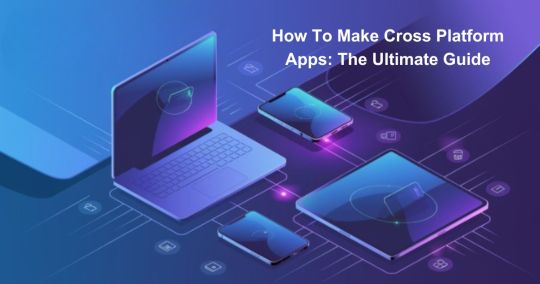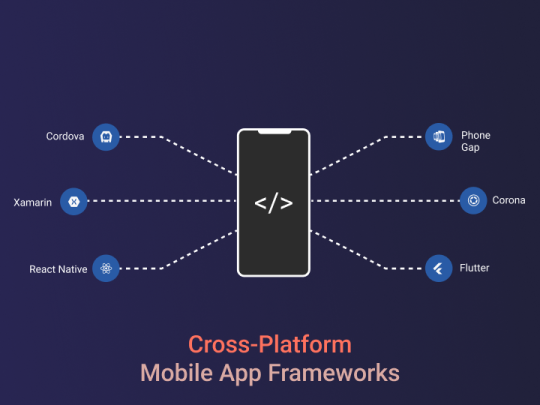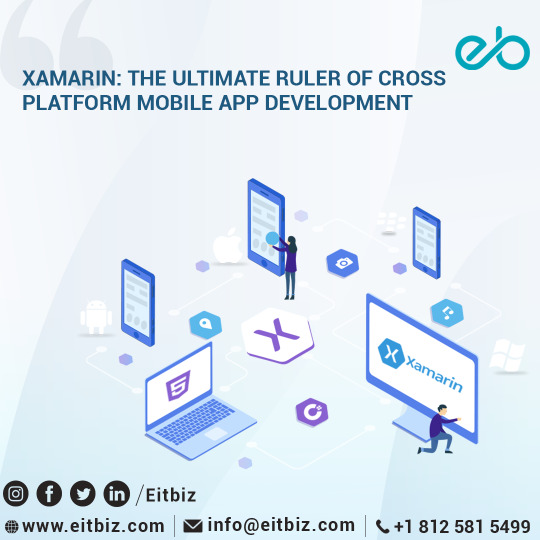#CrossPlatformMobileAppDevelopment
Explore tagged Tumblr posts
Text
1 note
·
View note
Text
Future-Proof Your Business with Mobile App Development
The demand for mobile app development services has increased in this digital era and it has become a basic need to make your business aware of the audience and reach heights of success. Today the use of mobile is rapidly increasing and so is the audience's demand to have everything available at their fingertips, businesses are increasingly turning to mobile app development services to stay relevant and competitive.
#bestmobileappdevelopmentplatform#topmobileappdevelopmentcompanies#bestmobileappdevelopmentcompanies#bestmobileappdevelopmentsoftware#crossplatformmobileappdevelopment#custommobileappdevelopment#custommobileappdevelopmentservices#custommobileappdevelopmentcompany#bestmobileappdevelopmentservices#crossplatformmobileappdevelopmentcompany#crossplatformmobileappdevelopmentservices#bestmobileappdevelopmentcompanyinIndia#custommobileappdevelopmentinIndia#bestmobileappdevelopmentinIndia#custommobileappdevelopmentcompanyinIndia#custommobileappdevelopmentIndia
0 notes
Text
How To Make Cross Platform Apps: The Ultimate Guide
Are you looking to build an app that works on both iOS and Android with a single codebase? Whether you’re a beginner stepping into app development, a freelancer seeking cost-effective solutions, or a startup founder aiming to get your app to market quickly, cross-platform development can be the perfect approach. But how to make cross-platform apps successfully? What framework should you choose, and how do you overcome common challenges?
In this ultimate guide, I’ll walk you through everything you need to know to make cross-platform apps that deliver great performance, design, and functionality.

By the end of this blog, you’ll be equipped with the knowledge to choose the right tools, avoid common mistakes, and create a seamless app for both platforms with less time and budget.
What are Cross-Platform Apps?
Cross-platform apps are mobile applications that work on both iOS and Android with a single codebase. Unlike native apps, which require separate codebases for each platform, cross-platform mobile development allows you to write the code once and deploy it to multiple platforms.
Benefits of Cross-Platform Apps:
Cost-Effective: Building one app for both platforms cuts development costs significantly.
Faster Time to Market: Instead of coding twice, you write the app once, speeding up development.
Wider Audience Reach: You can target both iOS and Android users simultaneously.
Common Myths About Cross-Platform Development
Myth 1: Cross-Platform Apps Are Slow — With modern frameworks like React Native and Flutter, performance is often comparable to native apps.
Myth 2: Cross-Platform Apps Don’t Have All the Features — Cross-platform apps can leverage device-specific capabilities, though some advanced features may require native code.
Key Considerations Before You Start
Before diving into how to make cross-platform apps, there are a few key factors you need to consider. These will guide your development process and help you make informed decisions about your app’s design, framework, and performance.
1. Know Your Target Audience:
Understanding who will use your app is crucial for determining which features to include and which platforms to prioritize. Are most of your users Android or iOS? Consider their behavior and preferences before making decisions about features and design.
2. Performance vs. Flexibility:
While cross-platform frameworks save you time and money, they may not match native apps in terms of performance for resource-heavy apps like games or video editing apps. If you need high performance, you might want to focus on native development or optimize your cross-platform app for performance using specialized libraries.
3. Budget and Timeline:
Cross-platform development is ideal if you’re trying to build apps within a limited budget. However, you still need to choose the right framework and avoid unnecessary plugins and tools that could increase your costs.
4. App Complexity and Features:
Complex apps that require advanced device features (such as augmented reality or heavy graphics) may benefit from native development. However, for most apps, a cross-platform solution can work just as well, saving you time and money.
5. Native vs. Cross-Platform Development:
When deciding between native and cross-platform, ask yourself: What is your budget? How complex is your app? Are you targeting multiple platforms? If you need to quickly target both iOS and Android with a simple app, cross-platform development is the way to go.
Popular Cross-Platform Frameworks and Tools
To understand how to make cross-platform apps effectively, selecting the right framework is key.
Here are some popular cross-platform app development frameworks to consider:
1. React Native
React Native is one of the most popular frameworks, developed by Facebook, and allows you to build apps with JavaScript.
Pros:
Reusable components.
Large community and lots of resources.
Fast development.
Cons:
Some platform-specific code may be required for complex features.
Performance may not be optimal for very complex or heavy apps.
2. Flutter
Flutter, created by Google, is known for its ability to create visually appealing apps with custom UIs.
Pros:
Great performance due to direct compilation to native code.
Customizable UI and animations.
Cons:
Newer than React Native, so it has fewer libraries and resources.
Larger app size due to the engine.
3. Xamarin
Developed by Microsoft, Xamarin is ideal if you’re working within the .NET ecosystem.
Pros:
Seamless integration with Microsoft tools.
Single codebase for iOS, Android, and Windows.
Cons:
Not as fast as React Native or Flutter.
Apps can be large.
4. Ionic
Ionic allows developers to build apps using web technologies like HTML, CSS, and JavaScript. It’s a great choice for simpler apps.
Pros:
Uses familiar web technologies.
Large set of pre-built UI components.
Cons:
Not ideal for complex apps that require heavy native functionality.
5. Unity (for Games)
If you’re focused on game development, Unity is the go-to framework for creating 2D and 3D games.
Pros:
Excellent for game development.
Supports both Android and iOS.
Cons:
Not suitable for typical mobile apps.
How to Choose the Best Framework?
Your Skillset: If you already know JavaScript, React Native might be your best choice.
Your App’s Needs: If you need a highly customizable design, Flutter is great. If you’re focused on games, go with Unity.
Community and Resources: Look for a framework with a large community, especially if you’re new to cross-platform development.
The Step-by-Step Development Process
Now that you know the basics, let’s look at the process for building your app.
Step 1: Plan Your App
Start by defining your app’s features. Create a clear roadmap outlining the core functionality, design requirements, and platform-specific needs. The more detailed your plan, the easier the next steps will be.
Step 2: Design Your App
Designing a consistent UI/UX across both iOS and Android is crucial. Use design principles that ensure your app is intuitive and responsive, but also consider platform-specific design guidelines (iOS has a different design language than Android).
Step 3: Code the App
Use a shared codebase for your cross-platform app, with some platform-specific tweaks if necessary. Write reusable components and make sure your app performs well on both platforms.
Step 4: Test Thoroughly
Testing is crucial for cross-platform apps. Use real devices and emulators to test your app on both iOS and Android to ensure it works as expected. Check for performance issues, UI bugs, and device-specific quirks.
Step 5: Deploy and Maintain
Once your app is tested, it’s time to submit it to the App Store and Google Play. After launch, monitor feedback, and address bugs or performance issues. Keep updating your app based on user feedback.
Common Challenges in Cross-Platform Development
While building a cross-platform app is cost-effective, it does come with challenges. Here are some common ones and how to overcome them:
Performance Issues: If your app is laggy or crashes, it may be because of poorly optimized code. Use performance tools to track and fix bottlenecks.
Platform Compatibility: Different devices may behave differently, so extensive testing is necessary.
Learning Curve: New frameworks like Flutter may take time to learn. Start small, and gradually build your expertise.
Keeping the App Updated: Cross-platform frameworks evolve, so you’ll need to stay updated to avoid future compatibility issues.
Best Practices for Successful Cross-Platform Apps
Focus on UI/UX: Ensure your app is user-friendly and looks great on both platforms.
Optimize for Speed: Reduce app size, optimize images, and ensure smooth performance.
Test on Real Devices: Emulators are useful, but nothing beats testing on actual devices to catch issues.
Stay Updated: Keep your frameworks and libraries updated to avoid bugs and security risks.
Use Plugins Wisely: Don’t overload your app with unnecessary plugins that could bloat your code.
Conclusion:
To make cross-platform apps, choose the right framework (like React Native or Flutter), write a shared codebase, test across platforms, and optimize for performance. Cross-platform development enables you to target both iOS and Android efficiently with a single app.
Ready to take your app development to the next level? iQlance specializes in building high-quality, cross-platform apps that deliver fast performance and great user experiences. Let’s collaborate to bring your app idea to life!
#howtomakecrossplatformapps#iqlance#bestcrossplatformframeworks#buildappsforiosandandroid#crossplatformmobileappdevelopment#createappsformultipleplatforms#crossplatformcodingbestpractices#crossplatformappdevelopment#crossplatformdevelopmenttools#mobileappdevelopmentguide#reactnativedevelopment#multiplatformappdevelopment#singlecodebaseappdevelopment#hybridmobileapps#crossplatformuiuxdesign#appdevelopmentlifecycle#mobileapptestingtools#scalableappdevelopment#howtochoosethebestcrossplatformframework#stepbystepguidetobuildingcrossplatformapps#commonmistakesincrossplatformappdevelopment#howtooptimizeperformanceinhybridapps#costeffectivewaystodevelopappsforandroidandios#toolstotestcrossplatformmobileappseffectively#reactnativevsflutterwhichisbetterforyourproject
0 notes
Text
Cross-Platform App Development Frameworks in 2023
The use of mobile applications is now widespread. No matter what our immediate requirement is – tickets, transportation, or food – we download the relevant app and do it. Thanks to advanced smartphone applications, we may access almost any resource instantly.
Mobile apps are becoming a need for many organizations across various sectors. These apps must function flawlessly on several iOS, Android, and Windows systems. You may create such products rapidly and cheaply with a cross-platform mobile development strategy.
The perfection of cross-platform app development is a crucial factor in its current popularity. Gradually, and then all at once, along with every other mobile app development business trying its hands at this remarkable and one-of-a-kind technology, a wide variety of cross-platform app development tools and frameworks rushed onto the market.
In 2023, the demand for companies to innovate and remain ahead of the competition will only increase. Having a presence on several platforms necessitates the creation of dedicated development teams, which may be time-consuming and expensive, especially for young businesses. Cross-platform mobile app development frameworks have emerged as a viable alternative for organizations looking to save time and money in the app creation process. Companies may develop programs across several platforms, such as Windows, iOS, Android, and the web, with only one set of code.
Learn about the best frameworks for cross-platform app development in 2023 and beyond with the help of this thorough guide. Get the most up-to-date knowledge on cross-platform frameworks to give yourself a leg up in the app development race.

What is Cross-Platform App Development?
Cross-platform applications can run on multiple platforms, such as iOS, Android, and Windows. In contrast to native applications, cross-platform apps need a single set of codes to function. Instead, you must develop the app’s code once, and it will perform smoothly across all platforms.
Several application developers and mobile app studios are switching to cross-platform app development. It has resulted in a proliferation of cross-platform app development frameworks and tools, leaving developers needing clarification on the number of options available.
For this reason, we have compiled this post to assist you in making an informed decision when selecting a cross-platform app development framework to create amazing applications compatible with several platforms.
What Is a Cross-Platform Mobile App Development Framework?
You can design applications that look and feel native on several platforms – including iOS, Android, Windows, and the Web – with just one piece of code, thanks to a cross-platform mobile app development framework. With cross-platform app development, you can reach more people in your target demographic while reducing costs and development time.
As it is one of the most well-liked innovations of the present, most mobile app development companies make heavy use of it.
Read more in details: Cross-Platform App Development Frameworks in 2023
#crossplatformmobileappdevelopment#crossplatformmobileappdevelopmentframework#Latestcrossplatformmobileappdevelopmentframeworks#crossplatformappdevelopment#crossplatformmobileappdevelopmentcompany#SolGuruz
0 notes
Text

#hybridapplicationdevelopment#crossplatformmobileappdevelopment#nativeappdevelopment#crossplatformappdevelopment
1 note
·
View note
Text
Top Cross Platform Mobile App Development company in USA
Tekmutants is the prime cross platform mobile app development company in the USA. Our expert developers and designers easily translate your ideas to cross-platform technologies creating a feature-rich mobile application for all types of audiences at an affordable rate.
#crossplatformmobileappdevelopment#mobileapplicationdevelopmentcompany#bestmobileappdevelopmentcompany#mobileappdevelopmentcompanyinUSA#mobileappdevelopmentchicago
1 note
·
View note
Photo

3 Apps that are bringing Augmented Reality to you in 2020. Impact of Augmented Reality on #MobileApplicationDevelopment.
Know More:- https://www.eitbiz.com/blog/impact-of-augmented-reality-on-mobile-application-development/
#Augmented Reality#MobileApplicationDevelopment#Mobile Application Development#MobileApplicationDevelopmentCompany#Mobile Application Development Company#MobileApplicationDevelopmentServices#Mobile Application Development Services#CrossPlatformMobileAppDevelopment#CrossPlatform Mobile App Development#MobileAppDevelopmentCompanyInUSA#Mobile App Development Company In USA#MobileApplicationDevelopmentPlatforms#Mobile Application Development Platforms#MobileAppDevelopmentIndianapolis#Mobile App Development Indianapolis#MobileApplicationDevelopmentCompanyInusa#Mobile Application Development Company In usa#AppDevelopmentIndianapolis#App Development Indianapolis#Eitbiz
7 notes
·
View notes
Link

0 notes
Link
Concertcare extended the cross platform mobile app development company to deliver top-notch quality over Android and iOS platforms.
#crossplatformappdevelopment#crossplatformmobileappdevelopment#crossplatformmobileappdevelopmentcompany#crossplatformappdevelopmentcompany
0 notes
Photo

In today’s era, businesses would not risk being absent on any platform. This is why Cross-platform Mobile App Development Tools has emerged as an unmatched choice of businesses that strive for a presence on iOS and Android
#mobileappdevelopment#crossplatformmobileappdevelopment#softwaredevelopment#StartupsandMVPAppDevelopment#mobileappdevelopmentcompany
0 notes
Link
Cross Platform Mobile App Development
0 notes
Text
Cross-Platform Mobile App Development Frameworks in 2023
As we move into 2023, businesses face increasing pressure to stay ahead in the highly competitive market. With the need to have a presence on multiple platforms, building separate development teams for each platform can be both time-consuming and costly, particularly for startups. To help businesses save time and resources, cross-platform mobile app development frameworks have emerged as valuable solutions. By using a single codebase, companies can create apps for a variety of platforms, including Windows, iOS, Android, and the web.
This guide provides a comprehensive overview of everything you need to know about cross-platform app development, including the best frameworks to consider in 2023. Stay ahead of the game and optimize your app development strategy with the latest information on cross-platform frameworks.
According to a published report in 2021 on Statista, 230 billion mobile apps were downloaded by mobile users around the world.
A revenue of 935$ billion dollars is expected to be generated via paid downloads and in-app advertising in 2023.
As a business, you would want to generate as many leads as possible through these users.
With Cross-Platform mobile app development frameworks, you can create applications for various platforms through a single code base. It saves you from the headache of choosing only one platform for running your business.

Another need for a Cross-platform app development framework arises from the fact that you have to learn and code in a different language for an OS and then convert it into another language for the app to work in a different OS.
Read More in details: Cross-Platform app development Frameworks in 2023
#crossplatformmobileappdevelopment#crossplatformappdevelopmentframeworks#solguruz#appdevelopmentframeworks#crossplatformapps
0 notes
Text

Cross Platform App Development | Cross Platform App Development Company
Get Cross Platform Mobile App Development Solution. Build, Deploy, Manage and Change Enterprise-Grade Apps. Visit to know which is better Native or Cross Platform App. QuantumITInnovation is leading Cross Platform App Development Company serving abroad. Get Free Consultation Web & App Development. contact us: +91 971 7998 517 + 1 877 877 364 Mail Us: [email protected]
0 notes
Link

#crossplatformappdevelopmentuae#crossplatformappdevelopmentcompany#crossplatformappdevelopment#crossplatformdevelopmentservices#crossplatformmobileappdevelopment
1 note
·
View note
Photo

Xamarin: The ultimate ruler of #crossplatformmobileappdevelopment.
Know More:- https://www.eitbiz.com/xamarin-development-services
#Xamrin#cross platform app development#CrossPlatformMobileAppDevelopment#XamarinAppDeveloperIndianapolis#HireXamarinDeveloper#crossplatformappdevelopment#XamarinAppDevelopment#XamarinAppDevelopmentCompany#XamarinApplicationDevelopmentServices#XamarinMobileAppDevelopment#Eitbiz
3 notes
·
View notes
Text
How to Choose the Most Suitable Features for Your Mobile Application
For the first version of your mobile application, you want to build a simple and intuitive user experience. Any feature that interferes with the intuition of experience is not worth having.
Your application needs to serve a purpose that is not wrong but must also be used. Features affect the usability and usability of your application. If you include too many features at first, users might be confused about the core purpose of the application and how it fits into their lives. If you are not critical about how certain features will affect user flow, you can end up with a horrible irregular user experience to use.

Understand the purpose of the product
When you are in the early stages of planning an application project, it is useful to use a Product Specification Document (PRD) to master and simplify your ideas. A PRD is designed to guide you through the process of fully defining the purpose of the mobile application project. In the introduction to the document, you are asked to describe what you want the application to do, define goals, and define what you consider a success. Realizing a PRD is the first step in choosing the best features for your application.
What do you want the app to do?
Regarding a viable minimum product (MVP), you must focus on solving a single problem faced by your users. Solving a single problem will help establish a focused product vision for the mobile application. This approach also allows you to define specific success criteria, as well as clear goals to determine the features that the product needs to succeed.
To fix objectives
The next step in choosing the product features is to set goals to achieve the end goal that you set in the vision statement. Goals are specific, measurable and achievable goals you want to achieve with your mobile product.
In the example of making appointments, the main goal is to allow patients to manage their appointments without having to call the office. For the mobile product, here are some examples of goals:
Create an intuitive, easy-to-use mobile presence for all patients.
Become a trusted appointment management option for patients by providing a secure and controlled mobile booking environment.
Become a reliable source of information about the details of appointments through accurate and consistent communication.
Now you have to translate your goals into themes. Themes are the criteria for success that you want to achieve your goals. By writing themes, the features required by your product will become clear as you chart each step you plan to take to achieve your goals.
Choosing the Best Features for Your App
Initially, it's easy to assume that an Appointment App requires login functionality, a calendar feature, and a messaging system, but when you walk through the sections of a PRD, you begin to go that choosing these features is an intensive process. Once you've defined the vision, goals, and themes for your product, you'll better understand how to prioritize features in a product roadmap: the present, the next, and the next in your MVP.
The features for this example are likely to include:
· Sign-up and login
· On boarding
· Navigation/patient dashboard
· Calendar with available appointment slots
· Mailbox
· Appointment approval workflow
· Tokenization structure for data security
· Device hardware access
· Email integration
· Push notifications
The PRD process helps you identify the features you need immediately to make your application usable and useful. Keeping the best specialties for your mobile application is a preparation method that needs you to fully define the product's vision, goals, and success criteria for the product. The best features of your mobile app will come naturally as you define exactly how to achieve your business and business goals.
If you have mobile application requirements, you know whose door you have to tap! We have been able to improve many businesses and make it a brand! Do you like increased sales? - Then contact us, because we are a Leading Mobile App Development Company Doha, Qatar that offers the best mobility solutions in its class. Also, Fusion Informatics is an Artificial Intelligence company in Qatar, provides Data Science, Machine Learning, Internet of Things, Blockchain, Cloud, Enterprise Mobility, & Business Process Automation solutions & services.
To Know More:-
Snapchat App Development cost
Online Booking App Development cost
Cost Of Mobile App Like Paytm
Ecommerce Mobile App Development Company
Cost Of App Like Car Wash App
Cost To Develop App Like Zomato
0 notes